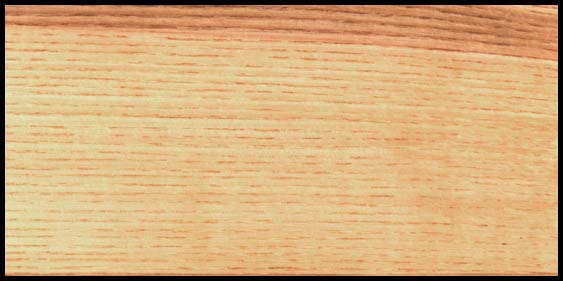
Ash, like oak, has several species in North America which can be mixed into commercial lumber and veneer, and is commonly available laminated to plywood and MDF.
Common Names: It's usually available as White Ash, Oregon Ash or Green Ash where the heartwood is creamy to light brown and the sapwood is lighter yet. Black Ash or Brown Ash are darker, yet have similar properties.
Growth Range: Southeastern Canada to the Gulf of Mexico in the eastern United States. West of the Cascades in the Pacific Northwest for Oregon Ash.
Similar Imported Species: From Europe comes European Ash which is slightly darker, also known as Olive Ash, French Ash, English Ash, etc.
Properties: Ash is a moderately heavy, ring-porous hardwood with many of the same specs as Red Oak. In addition, it bends well and is a primary wood for diving boards and it's shock resistance makes it a favorite for baseball bats.
Other common uses include cabinets, tables, chairs, paneling, flooring, etc. I've also seen it substituted for Red Oak where a light pickled finish is applied but the 'pinkness' of Red Oak is undesirable.
Like many ring-porous woods, the springwood cells are very large which gives the wood a sharp, contrasting grain pattern, particularly when plain-sawn. Though it machines well and dries easily, Ash has no innate resistance to decay or infestations from powder-post beetles. Air-dried lumber should be moved inside as soon as possible.
Reference Material:
- Know Your Woods: by Albert Constantine Jr.
- Revised by Harry J. Hobbs
- Publisher: Charles Scribner and Sons
- Copyright 1975
- Fine Hardwoods Sectorama
- Publisher: Fine Hardwoods/American Walnut Association
- Copyright 1978
- Woods of the World CD-ROM
- Publisher: Tree Talk Inc.
- Copyright 1994
Copyright©1997-2004WWA